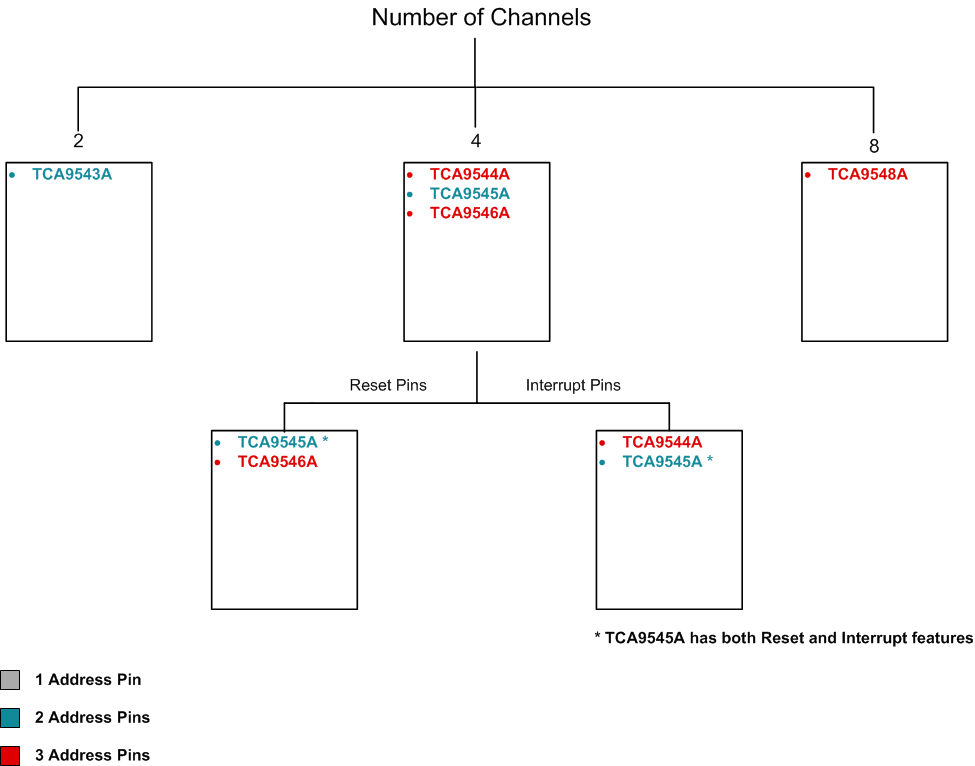SLVA787 September 2016 LM8330 , LM8335 , P82B715 , P82B96 , PCA6107 , PCA9306 , PCA9306-Q1 , PCA9515A , PCA9515B , PCA9518 , PCA9534 , PCA9534A , PCA9535 , PCA9536 , PCA9538 , PCA9539 , PCA9543A , PCA9544A , PCA9545A , PCA9546A , PCA9548A , PCA9554 , PCA9554A , PCA9555 , PCA9557 , PCF8574 , PCF8574A , PCF8575 , PCF8575C , TCA4311A , TCA6408A , TCA6416A , TCA6418E , TCA6424A , TCA9509 , TCA9517 , TCA9517A , TCA9534 , TCA9534A , TCA9535 , TCA9538 , TCA9539 , TCA9539-Q1 , TCA9543A , TCA9544A , TCA9545A , TCA9546A , TCA9548A , TCA9554 , TCA9554A , TCA9555 , TCA9617A , TCA9617B , TCA9800 , TCA9801 , TCA9802 , TCA9803
3.4 Level Shifting
I2C switches allow level shifting between the master side and slave side to ensure compatibility between I2C master and I2C slave as well as between multiple slave devices operating at different voltages. Mismatched voltages are a concern with voltages of master and slave devices moving towards lower voltages. For example, it is possible for a 1.8-V master I2C bus to communicate with a 3.3-V slave device on another channel. All channels may be at different voltages, with the only requirement being that the VCC pin must be connected to the lowest bus supply voltage that the switch will see.
 Figure 6. Selection Chart for TI I2C Switches and Their Key Features
Figure 6. Selection Chart for TI I2C Switches and Their Key Features